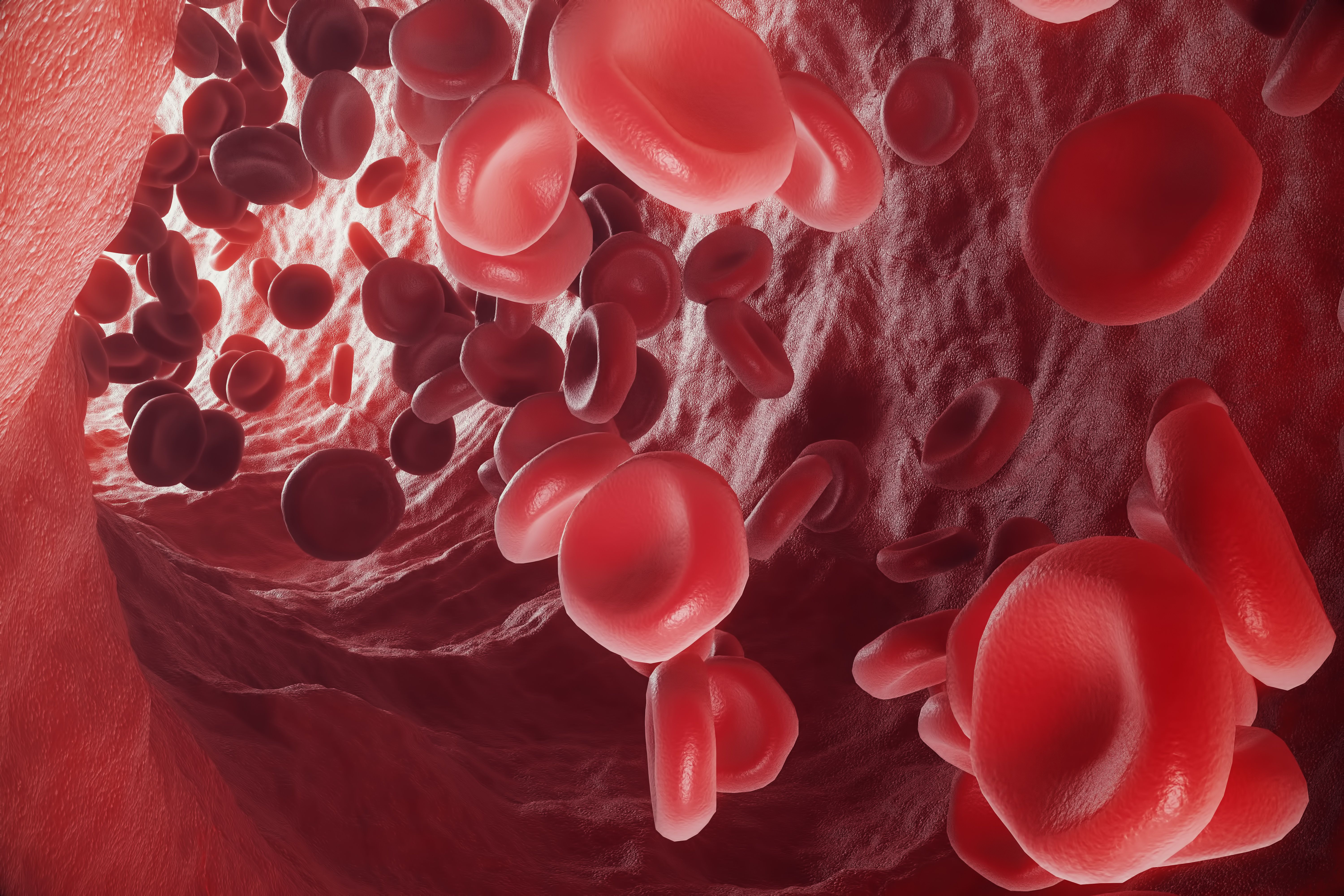Adding Parsaclisib to Ruxolitinib May Reduce Spleen Size in Myelofibrosis
Add-on parsaclisib showed improvement in spleen volume and symptoms in patients with myelofibrosis who were having a suboptimal response to a stable dose of ruxolitinib.

Add-on parsaclisib (INCB050465) showed improvement in spleen volume and symptoms in patients with myelofibrosis who were having a suboptimal response to a stable dose of ruxolitinib, according to new data presented at the Society of Hematology Oncology 2021 Annual Meeting.
The JAK 1/2 inhibitor ruxolitinib is known to improve symptoms in patients with myelofibrosis. However, some patients have suboptimal responses to the agent. Investigators hypothesized that activating the PI3K pathway may be beneficial for this patient population. Parsaclisib, is potent and highly selective PI3K inhibitor.
The phase 2 study (NCT02718300) enrolled 62 patients in order to determine the optimal dosing, safety, and efficacy, of add-on parsaclisib in patients with myelofibrosis. Patients included were 18 years of age or older, had an ECOG score of 0 to 2, and had a suboptimal response to ruxolitinib monotherapy.
Primary end points of the study included the number of participants with dose limiting toxicities and the change from baseline in spleen volume at week 12 as measured by an MRI or CT scan. Secondary end points include the number of patients with adverse events (AEs), the change in total symptom score, and change from baseline in spleen volume at week 24.
Part 1, the safety run-in, enrolled 10 patients. Parts 2-4, the randomized dose portions, enrolled 35 patients. Thirty-two patients were randomized to receive either daily or weekly dosing. For 8 weeks, patients in this cohort received either 10 mg or 20 mg of parsaclisib daily for 8 weeks. Patients were able to continue their regimen after. Thirty-five patients were randomized to receive only daily dosing. Patients received either 5mg or 20 mg of parsaclisib daily for 8 weeks. After the 8 weeks were up, the patients could receive 5mg as maintenance therapy. In both cohorts, parsaclisib was given with ruxolitinib.
The median age of the daily/weekly dosing cohort was 67 (range, 41-89) and 47% were male. The median time since diagnosis was 30.5 months (range, 6.7-268.9). The median daily dose of ruxolitinib was 27.8 mg (range, 2.1-50.0) and the median duration of treatment was 18.3 months (range, 6.1-94). Ninety-seven percent of patients had a palpable spleen with a median length of 10.8 cm (range, 0-47). The median spleen volume was 2414.5. The median MFSAF-TISS was 10.8 (range, 0-47). The median hemoglobin g/L was 102.
The median age of the all daily dosing cohort was 69 (range, 54-84) and 49% were male. The median time since diagnosis was 37.3 months (range, 4.9-251.5). The median daily dose of ruxolitinib was 30mg (range 8.7-44.8) and the median duration of treatment was 16.7 months (range 5.1-78.2). One hundred percent of patients had a palpable spleen, with a median length of 11 cm (range, 5-30). TH median spleen volume was 1885.3. The median MFSAF-TISS was 16.3 (range, 0.6-38.4). The median hemoglobin g/L was 96.
In total, 88% of patients in the daily/weekly dosing cohort discontinued treatment. Reasons for discontinuation included progressive disease (25%), physician decision (22%), AEs (19%), subject withdrawal (6%), death (3%), and other (13%). In the daily dosing cohort, 43% discontinued treatment. Reasons for discontinuation included progressive disease (11%), physician decision (11%), AEs (6%), subject withdrawal (11%), and death (3%).
At week 12, 29 patients in the daily/weekly dosing cohort experienced spleen reduction. Thirty-one percent experienced >10% reduction and 3% experienced a ≥25% reduction. In the all dosing cohort, 56% experienced >10% reduction, 15% a ≥25% reduction, and 4% a ≥35% reduction.
At week 24, there were 29 patients in the daily/weekly dosing cohort and 23 patients in the all daily dosing cohort experienced spleen reduction. In the daily/weekly dosing, 21% experienced a ≥10 reduction, 14% a ≥ 25%, and ≥35% reduction. In the all daily dosing cohort, 57% experienced a ≥10% reduction, 30% experienced a ≥25% reduction, and 9% a ≥35%.
In terms of safety, common all grade AEs included diarrhea (25%), nausea (22%), fall (19%), and abdominal pain (19%). Grade ≥2 diarrhea occurred in 6% of patients, grade ≥2 rash occurred in 1.5% of patients and 1.5% of patients developed a VZV infection. AEs of special interests and grade ≥3 or higher AEs were more common in the daily/weekly dosing cohort.